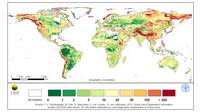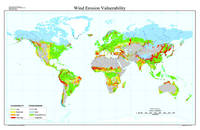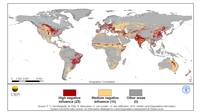Management and Natural Processes affecting the physical aspects of soils
The three major aspects of soil physical well-being are
- the absence of sealing and crusting;
- the absence of erosion both by water as by wind; and
- the absence of compaction.
Soil Sealing and Crusting
Soil sealing is prevalent in soils covered by infrastructure. These areas can be easily identified by remote sensing. Soil crusting is a local phenomenon at the surface of the soil that results in a thin impermeable layer that, hamper seedling emergence, reduce infiltration and favor runoff and erosion. It depends on soil texture, aggregate stability, topography and rainfall characteristics. Chapter 9 on Soil crusting and sealing in West Africa and possible approaches to improved management of the FAO Soils Bulletin #69 (Soil tillage in Africa, needs and challenges) precisely focuses on this issue.
Soil Erosion
Soil erosion by water may result in severe landscape deterioration by gullies and ravines or the silting up of dams downhill. In the case of wind erosion it may result in huge dust storms that deposit the finest particles thousands of kilometers from the source. Not all effects of soil erosion are negative and they may indeed improve downstream (or downwind) soil fertility : The farmers in the valley benefit from degrading farming practices uphill and deltas wouldn‘t exist without erosion in the upland mountains. However, it is the overall effect of accelerated erosion that is largely negative as most of the displaced soil and nutrients end up in rivers or dams and finally are largely lost in the sea. Water erosion risk can be estimated based on the amount and intensity of rainfall, the soil inherent vulnerability to erosion, the land cover, the land management and the slope characteristics.
Soil erosion by wind may result in huge dust storms that deposit the finest particles thousands of kilometers from the source. Wind erosion is more difficult to estimate than water erosion but a rough estimate of the vulnerability to wind erosion is given by USDA.
Soil compaction
The effects of compaction on soil health are variable but they often result in the creation of impermeable soil layers close to the surface and local waterlogging. Compaction of the subsoil occurs under external pressure and may create impermeable layers within the soil that limit the nutrient and water cycles. The most common causes are a strong concentration of livestock particularly in drier climates around water-points, and the use of heavy machinery and inappropriate tilling practices, mostly undertaken in industrialized agriculture




